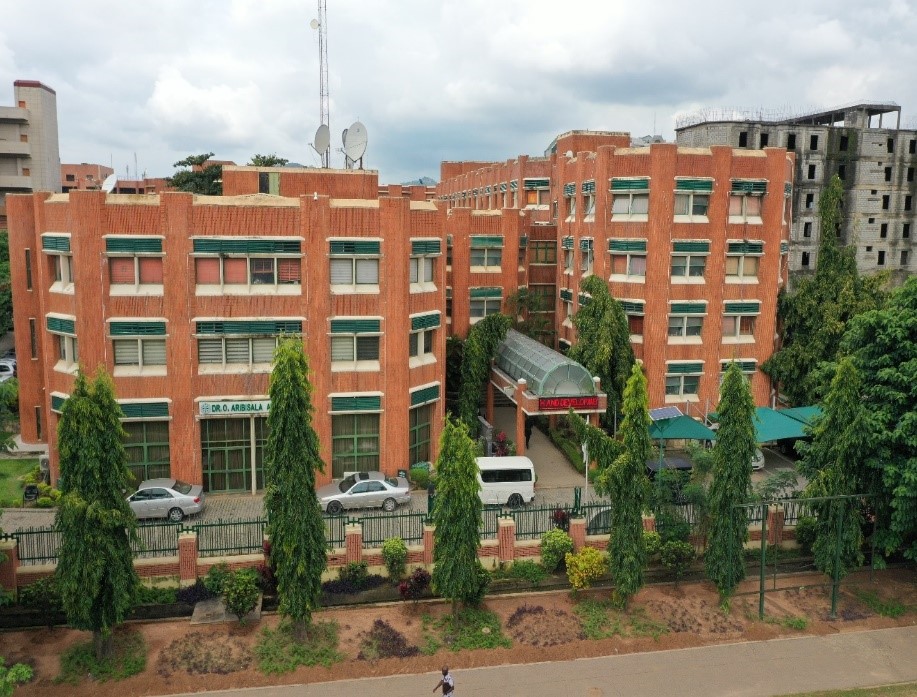By Emma Okereh
As the nation’s focal point for the development and utilization of its vast raw materials, the Raw Materials Research and Development Council (RMRDC)’s rise to reckoning came to the fore in view of its positive impact on the nation’s fledgling industrial sector.
The Council was established to expedite industrial utilization of locally available raw materials. Since establishment, RMRDC has embarked on a number of projects that changed the industrial landscape by promoting optimal utilization of locally available raw materials by the numerous industries operating in Nigeria.
Industrial development is one of the indices for measuring the development of nations. The survival of manufacturing industries is predicated largely on availability of raw materials, which if harnessed becomes part of the wealth of nations.
The exploitation and utilization of raw materials is critical to the development and survival of Nigeria’s industries and consequently, the standard of living of its citizens. Currently, the capacity utilization of many industries in Nigeria is low due to lack of raw materials and other required inputs.
To improve capacity utilization, RMRDC through its numerous programmes, has been promoting new investments in local resources-based industries and encouraging existing industries to source their raw materials from within Nigeria.
Non-Oil exports are products which can be defined as those visible and invisible exports which do not form part of oil export but contribute to the growth of the total export which includes manufactured products, agricultural products and services, solid minerals like tin, coal and columbite, among others.
In order to move the country forward through its ordained mandate as embodied in Act 39 of 1987 of the Federal Government, the Council dovetailed its efforts towards addressing the inhibitions that characterize the sector of manufacturing and fixed its gaze on improving Nigeria’s non-oil export potentials in which the manufacturing sector has a key role.
Wealth from non-oil export has been variously argued as an exercise that is urgently needed to extensively unlock the full potentials of our country from an import dependent country, to a wealth generating one.

With a well-intentioned strategy to develop the value chain of the nation’s several commodities, RMRDC has developed over 40 strategic agro and mineral commodities with special attention on their value chain potentials. This is with a view towards maximizing the nation’s fortunes in the global export trade. Already Available records show that more than 200 different products ranging from manufactured, semi processed solid minerals to raw agricultural products were reported to have been exported in the period under review while the trend of products exported from Nigeria is gradually shifting from its traditional agricultural export to semi processed manufactured goods.
RMRDC since its inception has contributed in lifting the nation’s drive to unlock its fortunes in the non-oil. Irked by a very high percentage of imported raw materials, the Council wove its programmes of activities around the sourcing of raw materials to reduce import bills, foreign exchange requirements, increase growth related local economic sectors (agro and mineral) and provide employment opportunities for Nigeria’s teeming youths.
This is anchored on the background that a well-developed local raw materials base can increase the percentage contribution of manufacturing to Nigeria’s GDP and export potentials. Local sourcing of raw materials are an engine of economic growth, being that it enhances employment generation through the development of export oriented industries, increases foreign exchange earnings and improves balance of payment quiescent of any given economy.
Nigeria is known for its huge raw and solid minerals deposits. Unfortunately, today, only 46.71 per cent of raw materials used by manufacturing industries are sourced within the country as most local manufacturers now source raw materials from other countries.
With Nigeria’s current unemployment rate at 24 per cent and over 50 per cent of the youth falling into that category, stakeholders fear that should the trend of non-sourcing of the raw materials locally continue, the percentage of unemployed in Nigeria could go higher.
For a country with large deposits of minerals and raw materials like cocoa, rubber, iron ore, coal and animal skins, among others, there is no reason why local manufacturing industries should not generate much of their raw materials locally.
Experts however believe that the ability of any nation to engage in the transformation of raw materials to finished goods significantly develops its economy. If values are added to local raw materials, these industries can help the Nigerian economy to stop importing finished goods from countries like Italy, China, Spain and India.
These countries top the lists of countries with high amount of manufactured outputs, even though they buy raw materials from Nigeria. Manufacturing industries can provide the economy more employment by providing opportunities in areas such as research and development, processing, engineering, entrepreneurship and a lot more.
Raw materials needed for industrial uses in Nigeria could be classified into four major classes, namely:
Unprocessed agricultural products, which are usually in their natural state, like cassava, yam, grains, fruits, vegetables, etc.
Semi-processed agricultural products in form of dry cocoa beans, dry sugar, pasteurised milk, grain flour, cocoa mass, malted grains.
The other two includes, finished products of a particular industry can serve as raw material or ingredient for another industry, e.g. refined granulated sugar, starch, ascorbic acid, flavour, etc.
And bye-product or effluent of an industry can serve as input for another industry, as molasses can be used for the production of alcohol and yeast, while biscuit dust can be used for the production of animal feed.
Food and beverage industries can supply raw materials to various sub-sectors such as brewery, soft drink, flour mill, cereal and bakery products, dairy products, animal feeds (livestock and fishery), meat and meat products, tea and coffee, sugar and sugar confectioneries, margarine, edible oils, roots and tubers, fruits and vegetables, spices and flavours.
In view of the above, the need to add value to the nation’s numerous raw materials has become germane in several respects. Among this is the need to save foreign exchange and create wealth by local industries engaged in raw materials value addition. The weakness of globalization on dependency on importation to feed the nation’s industries became obvious during the COVID-19 pandemic. The pandemic caused disruption in transportation and other forms of logistics that negatively impacted on importation of raw materials and products. It also showed that endowed countries will satisfy internal demands before considering exporting to dependent countries.
RMRDC has risen to the occasion in the midst of all of these to direct its efforts towards developing improved planting materials and boosting/increasing agricultural production and productivity of the various commodities.. The council’s activities have also revolved around activities aimed at ensuring the application of global best practices on commodities production and processing required to add an increment Nigeria’s non-oil commodities export fortunes.
Furthermore, it provides to manufacturers and SMEs detailed statistics on the import and export and industrial utilization potential of the various commodities, whilst providing to industrial stakeholders detailed statistics and implementation strategies employed to develop the commodities into secondary raw materials.
Nigerian products were exported to 112 countries- USA, Asia, Europe, Oceania regions and Africa. He pointed out that Brazil, the United States and India were the top three export destinations based on the value of their imports from Nigeria.
The traditional agricultural export commodities which have long-term export potential include cocoa, groundnuts, oil palm, cotton, and rubber, and the industrial activities include vegetable oils, textiles, cement, steel, motor vehicle assembly, chemicals and petrochemicals.
Apart from crude oil and gas, Nigeria’s non-oil exports are dominated by raw materials and agricultural commodities. This category of export products was once the major source of export earnings to Nigeria and it was before and immediately after the nation’s independence in 1960. Cash crops like groundnuts and cotton were sourced from the North. In the west, we had cocoa, rubber, while in the east, we had palm oil and palm kernel. In recent times, we had other exportable
In the fourth quarter of 2021, non-oil exports were dominated by urea, cocoa, sesame seeds, and aluminium alloys.
The top exports of Nigeria are Crude Petroleum, $30bn; Petroleum Gas, $5.89bn; Scrap Vessels, $1.29bn; Special Purpose Ships, $775m and Refined Petroleum, $613mn and exported mostly to India, $6.27bn; Spain, $4.8bn; China, $2.54bn; Netherlands, $2.24bn and South Africa, $2.17bn.
Nigeria is the ninth largest oil exporter in the world in terms of value. For the country, this means that about 90 percent of export value is generated by mineral fuels, oils, and distillation products.
The RMRDC is a parastatal of the federal Ministry of Science, Technology and Innovation with a mandate to promote the development and utilization of raw materials in Nigeria.
It was established by Decree 39 (now Act) of 1987, and commenced operation in Lagos on February 10, 1988. It operates with a corporate vision to be an indispensable catalyst for industrial development and growth, and with a mission to promote the development and optimal utilization of Nigeria’s raw materials for sustainable industrial growth.



